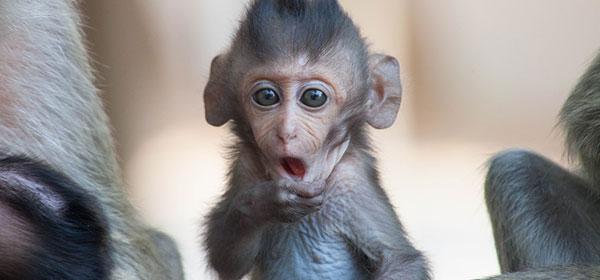Folks , just an observation - apes are not even a native species of Australia...! Even the indigenous tribes of Australia don't know who built that Gympie pyramid structure and ape statue . They say "it's not ours , but it's been there from before" .
https://www.yourlifechoices.com.au/news/where-are-australias-monkeys
Why are there no monkeys in Australia?
Why you won’t ever spot monkeys in Australian bushland.

Amelia Theodorakis
We all have questions that keep us up at night. Admittedly, why there are no monkeys in Australia may not be one of them. But since we’re on the subject, there’s a fascinating answer. It concerns an item from high school geography that you might or might not recall.
Take a wander through any of Australia’s vast and varied national parks and bushlands, and you’ll spot a myriad of distinctly Aussie fauna. Koalas dozing in trees, possums emerging at dusk, kangaroos making their escape over the crest of a hill. The animal you won’t spot in the wild – even though they’re found throughout most of the world – is a monkey.
Here’s why.
Take a look at a world map. If you have a detailed map and you can see the islands of Indonesia, you’ll notice that somewhere to the east of Bali, there’s a line on the map called the Wallace Line. This boundary line was discovered in the 19th century by British explorer and geographer Alfred Russel Wallace, and it separates the ecozones of Asia and Australasia. In other words, it marks the sudden changeover between Asian and Australian flora and fauna that Wallace noticed on his journeys.
The Wallace Line, which spans just 35 kilometres across a strait between Bali and Lombok, might not seem that remarkable, but it is significant. Many bird species observe the line, refusing to cross stretches of open water, even short ones.
Zoologists and geographers are still scratching their heads as to why the two regions have such different wildlife – monkeys and tigers on one side, koalas and kangaroos on the other. The line was discovered before Darwin’s theory of evolution was published, and long before scientists conceived notions of tectonic plates and continental draft.
The fact that monkeys did not make the journey to Australia can probably be attributed to geological movement that began 175 million years ago. Even though Australia and Asia are relatively close today, they haven’t been connected since the supercontinent Pangaea broke up all that time ago. At the time, Australia was next to Antarctica and the Indian subcontinent. Gradually, India drifted up towards Asia, and Antarctica went southwards to the pole. Australia has been an island ever since, confining Australian flora and fauna to evolve, isolated for about 80 million years. That’s why the only monkeys you’ll see on our fair shores are in captivity.
Now, that’s a handy piece of information to have on hand next time you’re wandering through the bush with visitors.
Find out more about Wallace’s Line at Asian Geographic.
Regards

